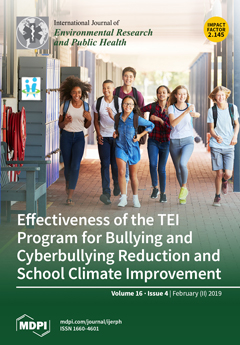C and N species, including dissolved organic carbon (DOC), dissolved inorganic carbon (DIC), dissolved organic nitrogen (DON), NO
3− and NH
4+ contents in 57 river water samples collected from the Mun River of Thailand were measured to determine the relationships
[...] Read more.
C and N species, including dissolved organic carbon (DOC), dissolved inorganic carbon (DIC), dissolved organic nitrogen (DON), NO
3− and NH
4+ contents in 57 river water samples collected from the Mun River of Thailand were measured to determine the relationships between these dissolved load species and their impacts on the environment. DOC values varied between 1.71 and 40.08 mg/L, averaging 11.14 mg/L; DON values ranged from 0.20 to 1.37 mg/L, with an average value of 0.48 mg/L; NO
3−-N values averaged 0.18 mg/L; and NH
4+-N values averaged 0.15 mg/L. DOC contents increased while DON and NO
3− values decreased along the flow direction. The concentrations of NH
4+ maintained the same level in the whole watershed. DOC and DON values exhibited clearly higher concentrations in comparison with other rivers worldwide and were inextricably linked with anthropogenic inputs. The relationships of DOC, DON, and anthropogenic ions imply that there are two different anthropogenic sources (industrial activities and agricultural activities) of the dissolved load in the Mun River watershed. The limited correlations between the DON, NO
3−, and NH
4+ indicate that the N species are not dominated by a single factor, and reciprocal transformations of riverine N pool are complex. Based on the environmental water quality standard reported by the EC (European Communities) and the World Health Organization, assessments of the water quality using the parameters of pH, dissolved oxygen (DO), NO
3−, NH
4+, and TN (total nitrogen) in the Mun River were conducted. The results demonstrate that the river water faces potential environmental pollution, and anthropogenic inputs endanger local water quality and the aquatic community. Therefore, the local government should restrict and reduce the anthropogenic inputs discharged in to rivers, and launch long-term monitoring of water quality.
Full article





